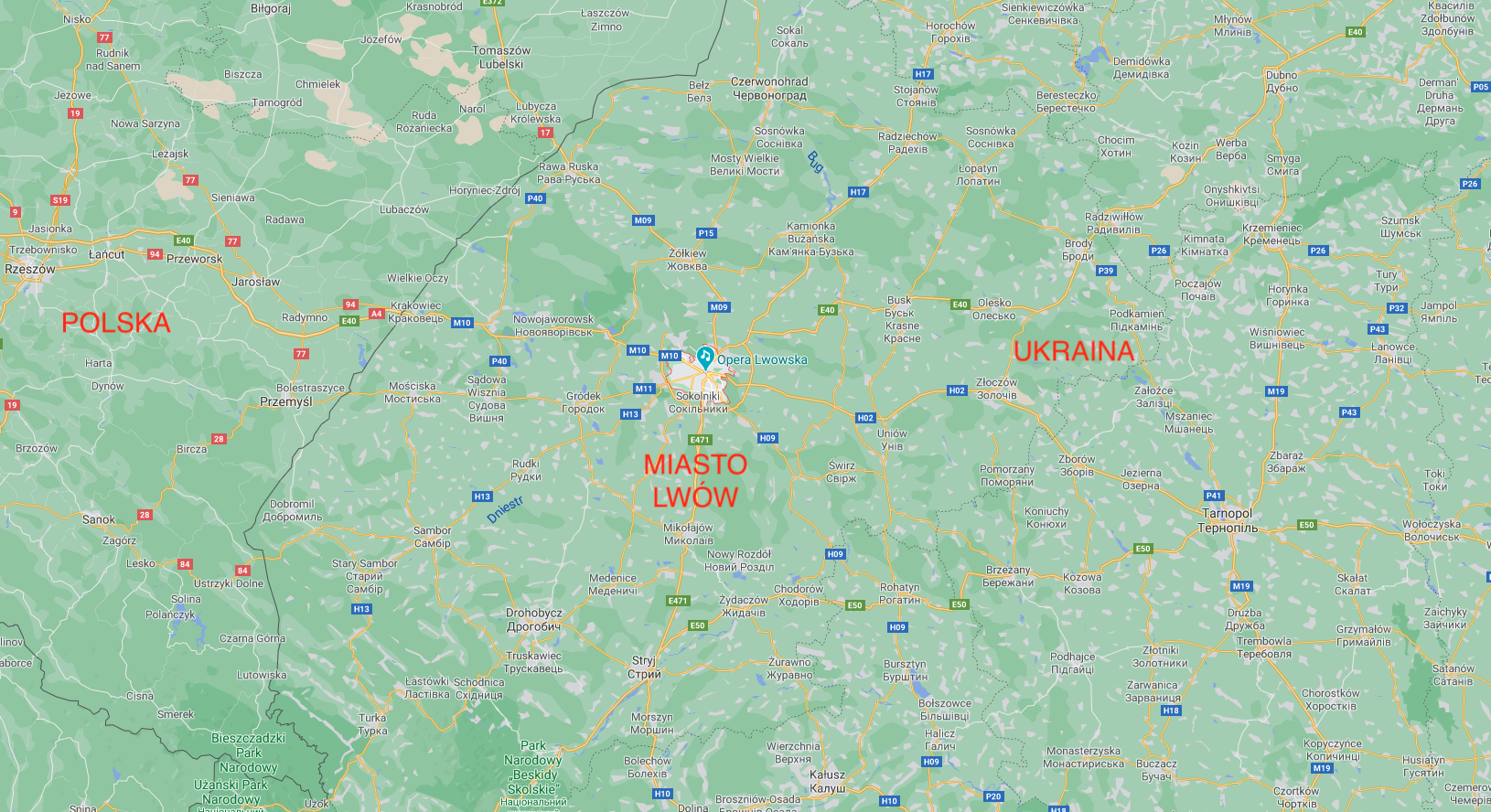Krakow, 26 October 2015
Lviv airports: Lewandówka and Skniłów.
The Lewandówka airport.
The interest in aeronautics in Lviv dates back very early. Already in 1884, the Aeronautical Society was founded, which published the periodical Aeronaut (Astronaut). One of the first of its kind in the world. The Society, however, did not last long. Lviv was a thriving academic center. Mechanical flight was dealt with by the machine-building department of the Polytechnic School, i.e. the later Lviv Polytechnic. In 1909, people interested in aviation formed a company called Awiata. Not to be confused with the Warsaw Aviation Society in Warsaw. The task of Lviv Aviata was to popularize aviation through readings, exhibitions and shows. Kites and balloons were presented. French pilots were invited to Lviv. It was in Lviv that the first Polish pilot, Scipio del Campo, who obtained a pilot’s license in France, demonstrated successful air shows. The horse racing track near Persenówka was used for these shows.
The first planes in Lviv were built in 1910, and possibly a year earlier. These structures were built in barns that became hangars. Until the Great World War, several aircraft constructions were built in Lviv, the attempts of which were successful. Various places were used as take-off fields, among them Kulparkowskie Field and Błonia Janowskie.
Until 1914, Lviv did not have its own airport. The Great World War brought changes. The airport was established by the Austrians between June 1915 and the end of 1917, on the so-called Lewandówka, which is part of Janowskie Błonia, west of the city center. There was a freight train station nearby, and the main railway station of Lviv. Błonia Janowskie was used by soldiers from nearby barracks as an exercise site. There was a war going on, so the airport had relatively poor facilities. Four wooden hangars were erected. Each of them housed one plane. Airplanes were serviced and repaired in the hangars. There was also a gas station, a meteorological station and a barracks at the airport headquarters.
The Skniłów airport.
In 1921, the structure of the Polish Army was reorganized into a state of peace. Everything related to the Polish Aviation was subordinated to Department IV. Air Navigation Services of the Ministry of Military Affairs (1921-1926). In the department, in 1923, the Construction Department was established. Its bosses were tasked with organizing the issue of airports in the Republic of Poland. It was then decided that the existing airports should be maintained, paying attention to their standardization and balanced development. However, Lewandówka Airport was not suitable for expansion. Decisions were made to build a new airport for the city of Lviv, maintaining the old airport until the new one is operational. Therefore, on the plans of the city of Lviv as early as 1923, Lewandówka Airport was marked as the old airport and a new area for the airport in Lviv was already sought. In 1924, after the reform of Władysław Grabski’s finances, the Sejm of the Republic of Poland passed the first budget in reborn Poland, which included military expenditure, including the construction of new military facilities. The government then decided to build two new airports for aviation regiments: Okęcie for the 1st Aviation Regiment and another near Lviv for the 6th Aviation Regiment. These were expensive investments carried out over several years.
A suitable area was found approximately 5 km from the center of Lviv in the south-west direction on the road to Gródek in the village of Skniłów. The area was purchased in 1924. 200 hectares were purchased, 100 hectares of which were allocated to the landing field, and the remaining area was allocated to the infrastructure of not only the airport, but also the base of the 6th Air Regiment. At the very beginning, the drainage and leveling of the ascent field began.
When designing the Skniłów Airport, French experience was used. According to them, the airport should have the shape of a circle, ellipse or regular polygon. Depending on the destination, its diameter should be: spare airfield 800 m, regimental airfield 1 200 m, training airfield 1 500 m. In Skniłów the take-off area is set on a circular plan. There are three directions for take-offs and landings, the so-called paddocks. Each of them is 600 m long and 400 m wide. It is not known when exactly the take-off field was launched, but it can be assumed that as early as 1925, planes landed and took off here. The construction of a water, sewage and electricity network is planned at the airport. Flats for the officers of the 6th Aviation Regiment were planned to be built in Lviv itself. The first buildings of the new facility were built in the spring of 1925. The plans were impressive and mostly completed by 1935. The technical area included hangars, technical park (workshops), technical warehouses, fuel depot, car park, and a railway siding. One of the hangars was intended for the Aerolot transport company, and from 1929 for PLL LOT. The administrative and barracks zone included: the headquarters and port headquarters building, school base, warehouses, a canteen with a kitchen, a bathhouse, a laundry room, a guardhouse, a prison, an infirmary and a fire department. A network of internal roads has been built. There was a power plant, a water tower and a boiler room for central heating. In a word, a modern garrison. The scope of works carried out in Skniłów can be compared to those carried out in Okęcie, because it was the second such important new aviation facility in the Republic of Poland.
Written by Karol Placha Hetman

